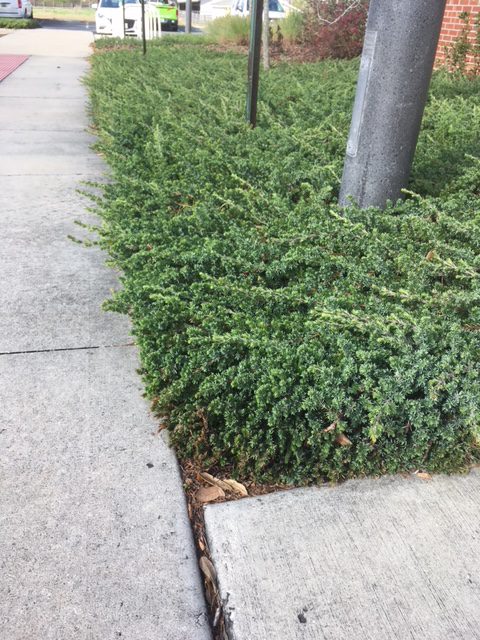
by Julie McConnell | Mar 13, 2018
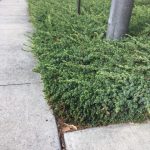
Shore juniper forms a thick groundcover and tolerates hot, dry sites. Photo: J_McConnell, UF/IFAS
We all know that when you have bare ground in Florida, eventually something unwanted moves in or the soil moves out. To avoid either of these negative outcomes, a good practice is to grow robust vegetative groundcovers, especially if the soil slopes and is at high risk of eroding. Turfgrass is one option, but what if you don’t enjoy caring for a lawn or the site is difficult to maintain or even unsafe to mow? An often overlooked option in our area is Shore Juniper Juniperus conferta.
Although some people find this plant less than exciting, its easy to explain why it can be a good option in certain situations.
- Easy to find at nurseries
- Inexpensive
- Low water requirements once established (you’ll need to turn the irrigation off on these!)
- Salt tolerant
- Evergreen
- Cold tolerant
- Low, spreading growth habit (won’t block view)
- Do not require pruning (junipers cannot tolerate heavy pruning!)
A common cultivar of shore juniper is Blue Pacific Juniper which grows to be about one foot tall but spreads two to three feet wide. The new foliage has a blue cast that gives it the common name. It creeps along the ground and will provide good ground cover to sloping sites. This plant should be planted on 3 foot centers so they have room to expand without crowding. Plant in well-drained soil and apply two inches of mulch on bare soil between plants to reduce weeds while the plants are filling in. Only water until established, then stop automated irrigation and only water as needed. Read more at Establishing Shrubs Florida Landscapes.
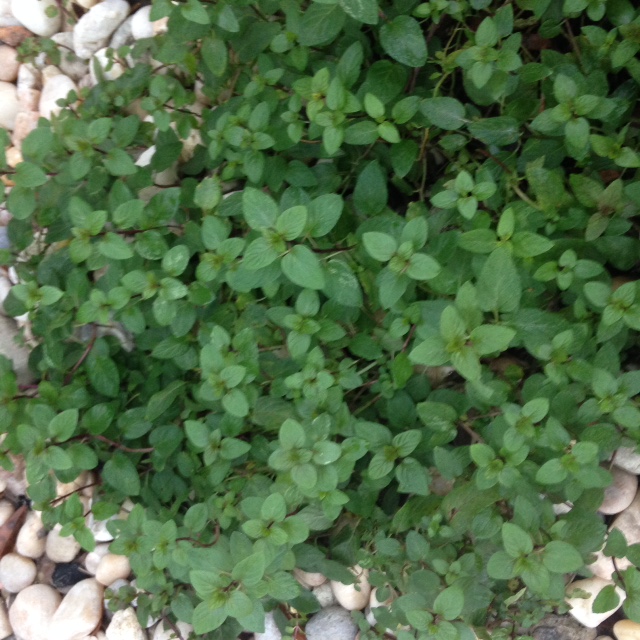
by Julie McConnell | Aug 12, 2016
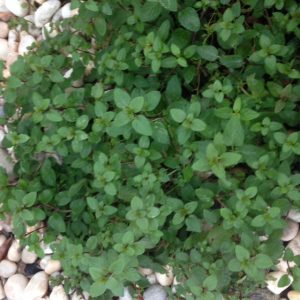
Chocolate mint has fragrant, dark green foliage and works well as a groundcover. Photo: Julie McConnell, UF/IFAS
Mint is very easy to grow in the right place, sometimes a little bit too easily. It’s reputation for being aggressive is well deserved. As with any other plant you use in your landscape, you need to be sure you have the right plant for the right place and there just might be such a spot in your garden for mint!
Garden areas with part sun/part shade and moist soil are perfect environments for mint. Like most herbs, it does not require much fertilizer and there are very few insects that bother it. Because mint forms runners where it touches the ground it is an ideal plant to use in areas that need soil stabilization as the dense growth habit will prevent erosion and sediment runoff.
Mint grows rapidly in the right conditions and can spread further than a gardener might want. However, it is not difficult to manage with a little maintenance. Because the plant is herbaceous rather than woody, it can be pulled or trimmed with little effort. Another method to keep it in bounds is to chemically edge using an herbicide on the portions that are growing beyond the bed border. Just keep in mind that if you plan to use your mint in food or drink you should only use chemical products labeled for edible crops and follow all label instructions closely.
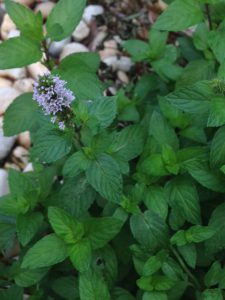
Mint flowers are attractive to pollinators. Photo: Julie McConnell, UF/IFAS
There are many different mints available such as chocolate mint, spearmint, and peppermint. Each has a slightly distinct flavor and may have different sized leaves or coloration. Mints are prolific bloomers and are attractive to pollinators such as bees and beneficial wasps.
To read more about mints please see http://gardeningsolutions.ifas.ufl.edu/plants/edibles/vegetables/mint.html





